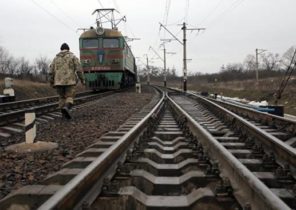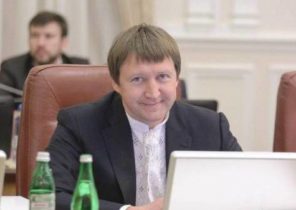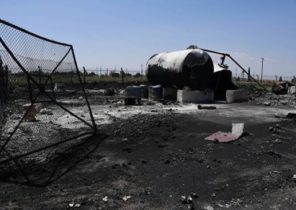Until March, all the responsible persons of the organizations infection control denied that the aim of the Swedish strategy for covid-19 — so-called collective (or herd) immunity, which is a barrier to infection that occurs when 50 to 70% of the population acquiring antibodies after disease or vaccination. “No,” said the microbiologist office of public health Karin Tegmark of Viselli (Karin Tegmark Wisell) in March to a direct question, seeking power through slow the spread of infection to achieve the desired herd immunity. “Now the task — at any price to slow down the epidemic,” she said.
But in recent weeks the tone has changed, and today it appears the authorities believe that it is thanks to the collective immunity of the Swedes manage to defeat the epidemic. Moreover, they think that we, at least in the Stockholm region, it is already very close to this goal, suggesting that the majority of people often don’t even notice that ill. “Our models think that it will happen sometime in may”, — said the chief epidemiologist Anders Tegnell (Anders Tegnell) 16 APR Norwegian NRK.
And on April 23 the Deputy chief epidemiologist Anders Wallensten (Anders Wallensten) stated that by may 1, according to estimates, 26% of Stockholm’s population should recover covid-19. That’s why they believe that the situation in Sweden is much more rosy than in other countries, especially in relation to the potential second wave of infections in autumn. “The risk is much lower, since the first wave we had a major issue — said Tegnell may 10 — just can not say, but a large part of our population already had and acquired immunity. And in countries which have taken tough measures, there are very people who can still get infected”.
I’d like to hope that this prediction is correct, because the first wave of infection we were much harder than in neighboring countries. For the second week of may in Sweden died an average of 70 people a day, whereas in Finland — four people a day in Norway — one person per day in Denmark to six people a day.
Mortality rates in different countries — which at first was all on one level — also shows large differences.
So how can you count on the fact that Sweden and other affected countries are close to the collective immunity?
The problem is that until recently we have lacked tests for antibodies which would show that the person had been ill, and therefore may have acquired some immunity. In recent weeks, however, have begun to use several types of tested tests. Worldwide started research on how managed to spread infection.
The numbers were amazing. First, the data from Wuhan, the original epicenter of the epidemic. When tested 8.3 thousand residents of the city, of which 3.6 thousand were members of one of the largest hospitals of antibodies to coronavirus was found just 2-3%, which hardly indicates a set of unregistered infected (at 0,4% of the population had previously been diagnosed covid-19). These data were presented in the Wall Street Journal on April 16, but in journals they have not yet appeared.
But began to publish reports from other countries. In the Netherlands the total number of deaths per million inhabitants is about the same as in Sweden. There for the first two weeks of April has made an analysis of approximately 7 thousand blood donors. Only 2.7 percent of them showed antibodies to the virus. In the most affected areas of the country, this figure reached 9.5%.
The approach in which tests are taken from blood donors, there are advantages and disadvantages in the other studies was also taken of other groups of people. For example, in Geneva the analysis were taken from randomly selected citizens, and antibodies were detected at 5.5%. In Belgium, which suffered most of all from 20 to 26 April 3,4 analyzed thousands of blood samples were taken from the regular visitors of the clinics in different parts of the country. Antibody was only 6%.
Of course, the question arises: what do these numbers mean? When those who have antibodies to the virus might be infected? Probably not later than two or three weeks before analysis, because the production of antibodies in the blood takes time. Therefore, these data do not reflect the current situation. But the same applies to mortality. The time from onset of illness to death from covid-19 the average is 18 days, and to this we must add the incubation period — an average of five days. So that the number of deaths reflects the spread of the disease, topical a few weeks ago.
On April 26 in Belgium were 619 deaths per million inhabitants is almost two times more than in Sweden now. And still antibodies were found in only 6% tested.
It’s a grim numbers for all who believe in herd immunity.
“Herd immunity is not a solution, says epidemiologist Pierre van Damme (Pierre Van Damme), one of the leaders of the Belgian study. — In Europe know it. The epidemic need to win in another way”.
But in Sweden take a different view. Experts of Management of public health predicted that herd immunity will be formed in Stockholm in mid-may, a mathematics Professor Tom Britton (Tom Britton) now expects that it will happen in mid-June. According to him, will be enough if you overcome 40%.
In other words, almost half of Stockholmers will be infected in a month?
We don’t know, because no large study of antibodies among Swedish citizens has not yet been completed. But already published several small works. And it is clear that the region is divided into clusters.
In some suburbs, companies, hospitals (e.g., hospital Danderyd) the proportion of carriers of antibodies is very large and others very small. In the two Stockholm studies published in the press and coverage of 500 people each, the proportion of native antibodies was 10 and 7%, respectively, but distributed these percentages were very uneven. In the inner suburbs Rissne and Yerba holders immunity very much, whereas in many parts of Stockholm not at all.
Although this is a very limited study compared to the European, together they indicate that collective immunity is still very far away. Technical Manager who Maria van Kerkhove (Maria Van Kerkhove) on may 11 said, “so far, we see roughly the same pattern: only a small proportion were tested have antibodies… This figure is from 1 to 10%”.
Sole source based on large-scale inspections, which in recent times stands out, was the report published in new York in late April. Two days in grocery stores and Department stores there have taken the analysis of 1,3 thousand people, and the antibodies found in 21%. Because the study was conducted in the period when the new Yorkers were urged to stay home, perhaps the test sample was not very representative, but because the indicator is overestimated. But even if the figure is reliable, still it must be considered in relation to the number of deaths in the same city. On may 12 in new York for a total of covid-19 died 20 237 people. This is 0,24% of the total population of the city. Of the residents older than 75 years from the disease died almost 2%.
“In all countries, the infection spreads like wildfire, but we can’t see her, said the former chief epidemiologist of Sweden and current Advisor office of public health Johan Giesecke. It is almost always passed from people without symptoms or with mild symptoms to those who will also be mild symptoms”.
Of course, he paints a rosy picture, but it is weakly correlated with reality, at least if you start from the mortality rates and number of carriers of antibodies in Belgium, Wuhan and new York.
To immunity appeared at 50% of the population, according to new York was supposed to die of 0.5%, according to Belgium — 0.6% according to the Wuhan — 0.7% of the population.
And of the citizens older than 75 years will die 4% — only then in new York formed a collective immunity.
“Herd immunity is scientism, not science,’ said Professor Yanir Bar-Yam (Yaneer Bar-Yam), an expert on complex systems. Is the idea that we should let the disease just to kill people.”
And here is how tells about it Michael Ryan (Michael Ryan), an expert on crisis situations, the who: “People are not a herd. Such logic can lead to very cruel arithmetic, when the focus is not the life and not the suffering people.”
Herd immunity may work when we’re talking about chickenpox, which kills one out of 60 thousand. But when the disease kills one out of a hundred, not so good.
Karin Tegmark of Viselli said the right words, saying in March that “the goal — at any price to slow down the epidemic.”
All over the world are now conducted thousands of scientific research — not only in order to find a vaccine, but in order to develop new drugs and therapies covid-19. And they already give promising results.
We know very well about the enormous economic and psychosocial effect on society of the draconian restrictions. Of course, this must be taken into account. But to rely on future herd immunity is unrealistic and dangerous.
We must, to the extent possible, to protect people until, until you have evaluated the results of numerous medical experiments and while some of them will be applied.
It is important that the focus was people, life, and human suffering.
Bjermer Leif (Leif Bjermer), Professor of pneumology and Allergology at Lund University
Marcus Karlsson (Marcus Carlsson), associate Professor of the mathematical centre at Lund University
Lena Einhorn (Einhorn Lena), doctor of Virology
Stefan Einhorn (Stefan Einhorn), Professor of molecular Oncology at the Karolinska Institute
Andrew Ewing (Andrew Ewing), Professor of molecular biology and chemistry at the University of Gothenburg
Jonas Friesen (Jonas Frisén), Professor at the Karolinska Institute, a specialist in stem cells
Åke Gustafsson (Åke Gustafsson), clinical virologist, former chief microbiologist and head of infection control in the regions Gavleborg and Uppsala
Claudia Hanson (Claudia Hanson), associate Professor of global health at the Karolinska Institute
Stephen Hanson (Hanson Stefan), infectious diseases, doctor of research in international health
Tumas of Hedner (Thomas Hedner), Professor of clinical pharmacology at Academy of Sahlgrenska and the University of Gothenburg
Ulla Isaksson (Isaksson, Olle), Emeritus Professor of endocrinology of the Academy of Sahlgrenska
Anders Jansson (Anders Jansson), chief physician Department of clinical physiology at the hospital Danderyd
BU Lundbeck (Bo Lundbäck), assistant Professor of clinical epidemiology of lung diseases at the University of Gothenburg
Åke lundkvist (Åke Lundkvist), Professor of Virology at Uppsala University
Ian Levall (Jan Lötvall), Professor of clinical Allergology at the University of Gothenburg
Andreas Nilsson (Andreas Nilsson), Professor of psychology at the University of Gothenburg
Olsen Bjorn (Björn Olsen), Professor of infectious diseases at Uppsala University
Tumas Sandstrom (Thomas Sandström), Professor of clinical medicine and public health at umeå University
Steineck Gunnar (Gunnar Steineck), clinical Professor of ecoepidemiology at the Academy of Sahlgrenska and the University of Gothenburg
Cecilia Soderberg-of Nogler (Cecilia Söderberg-Nauclér), doctor, Professor of medical microbial pathogenesis at the Karolinska Institute, is studying the viruses and human immune system
Vahlne Anders (Anders Vahlne), Emeritus Professor of clinical Virology at the Karolinska Institute
Anders Valine (Anders Wahlin), Emeritus Professor of Hematology at the University of umeå







